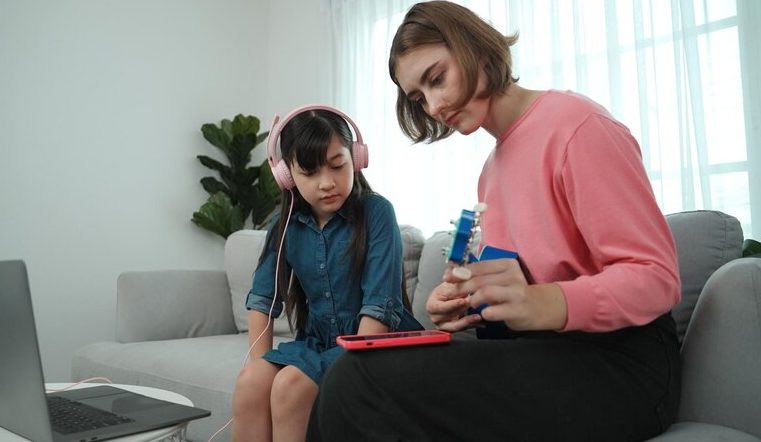
When parents hear the word autism, their first instinct is to Google.
And when that rabbit hole opens, you’ll likely stumble upon terms like “high-functioning autism” and “low-functioning autism.”
You might have even tried to research: what is high functioning autism, and what is low functioning autism?
Sounds clinical, confusing, and frankly—overwhelming. Are we labeling children like smartphones now?
No worries, take a deep breath. Let’s walk through it together—one myth, one definition, and one explanation at a time.
What Do “High-Functioning” and “Low-Functioning” Autism Actually Mean?
First off, these terms aren’t even official diagnoses. That’s right!
The Diagnostic and Statistical Manual of Mental Disorders (DSM-5), the big clinical book for psychologists, doesn’t recognize “high” or “low” functioning autism.
Instead, it uses Autism Spectrum Disorder (ASD) with three levels of support, i.e., Levels 1, 2, and 3.
So, where did these terms come from?
Mainly, they’ve been used informally to describe how much support a person might need in daily life. But here’s where it gets tricky: labeling someone as “high-functioning” may minimize the invisible challenges they face, like social anxiety or sensory overload.
On the flip side, “low-functioning” often overlooks a child’s strengths, like problem-solving, creativity, or emotional intelligence.
Bottom line: every child on the spectrum is unique. Autism isn’t a straight line from “less” to “more.” It’s a kaleidoscope.
Let’s Talk About the Real Differences
Instead of “functioning labels,” we should look at a child’s individual strengths, challenges, and support needs. Here’s a more helpful way to understand what are the differences in autistic profiles:
| Category | Children Who May Be Called “High-Functioning” | Children Who May Be Called “Low-Functioning” |
| Verbal Communication | Often fluent in speech | May have limited or no verbal speech |
| Daily Living Skills | Independent or semi-independent | May need help with eating, dressing, etc. |
| Cognitive Abilities | Average to above-average IQ | May have intellectual disability |
| Behavioral Challenges | Often internal (e.g., anxiety) | May be more visible (e.g., meltdowns) |
But remember, labels don’t define a child. Behavior is communication, and every challenge is an opportunity for understanding.
The Problem with Labels: A Myth-Busting Moment
Let’s bust some common myths while we’re here:
Myth #1: “High-functioning” means the child doesn’t need help.
Nope. Just because a child can speak or make eye contact doesn’t mean social interactions are easy. They might be “masking” (hiding their difficulties), which is exhausting and can lead to burnout or anxiety.
Myth #2: “Low-functioning” means the child isn’t smart.
Absolutely not. Intelligence is multi-faceted. A child may not speak, but they may solve complex puzzles, have perfect pitch, or memorize maps. The traditional IQ test doesn’t always capture these abilities.
Myth #3: Functioning labels help parents understand their child’s future.
Not really. A “low-functioning” toddler can learn to read fluently. A “high-functioning” teen may struggle with independence. Children grow, evolve, and surprise us—constantly.
Why Early Intervention Matters and How ABA Fits In
This is where things get hopeful.
Enter Applied Behavior Analysis (ABA), a scientifically backed, data-driven, and highly customizable therapy that helps children with autism build meaningful skills.
Here’s why parents are turning to ABA therapy:
- Improves communication (verbal or nonverbal)
- Encourages positive behavior
- Teaches daily living and self-help skills
- Reduces anxiety-triggering behaviors
- Supports school readiness and social skills
And the results? They speak volumes.
According to a 2020 study published, children who received early and intensive ABA therapy showed significant improvements in IQ, language, and adaptive functioning over time.
Another long-term study found that nearly 50% of children in intensive ABA programs were able to function successfully in mainstream classrooms after therapy (source).
And yes, we know “therapy” can sound scary. But many ABA sessions look more like playdates—with purpose.
Think games, songs, high-fives, and a lot of “Yes, you did it!”
Plus, let’s be real. Parenting is hard. Parenting a neurodivergent child? It’s like parenting in expert mode—with no manual and lots of pop quizzes.
You are not alone. Your child is not broken. And laughter is allowed—even encouraged—on this journey.
Strength-Based Support: Let’s Focus on the Whole Child
Instead of “What can’t my child do,” let’s ask:
- What lights up their world?
- What are they curious about?
- What makes them feel safe, loved, and understood?
With the right supports in place—like a personalized ABA program—your child can thrive.
How Early Autism Ventures (EAV) Helps You and Your Child
At Early Autism Ventures (EAV), we believe in meeting every child where they are—no labels, no limits. Whether your child needs help with communication, daily routines, emotional regulation, or social skills, we’re here to build a plan that works for your family.
Our board-certified behavior analysts (BCBAs) work closely with you to create a fun, compassionate, and effective ABA therapy experience. From in-home to clinic-based services, we’re all about connection before correction.
And yes, we love progress charts—but we love happy kids even more.
Ready to Take the First Step?
Every child deserves a chance to shine. And every parent deserves a supportive team in their corner.
Whether you’re just starting out or looking for more effective support, Early Autism Ventures is here to help.
Contact us today to schedule a free consultation and discover how ABA therapy can transform your child’s journey. Let’s replace the myths with milestones—and have some fun along the way!


